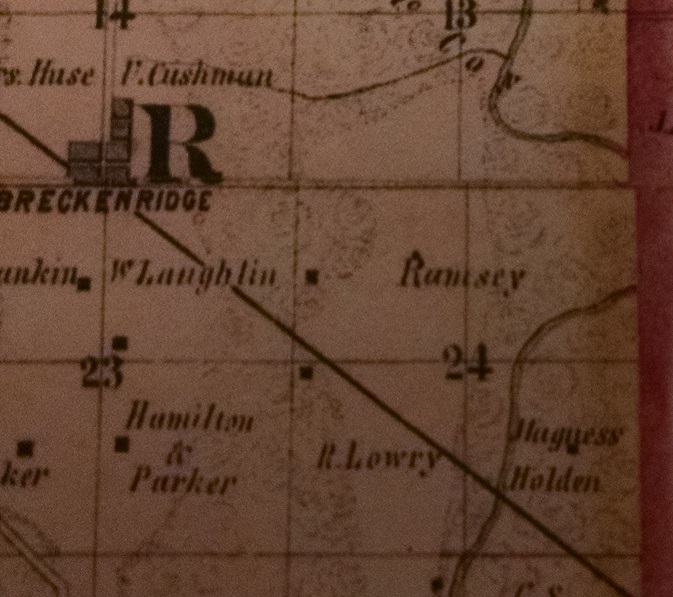 I recently purchased a reprint of the 1859 Hancock County, Illinois landowners’ atlas on Ebay. I’ve seen a photoreproduction of the map years ago, but this reproduction was well done.
I recently purchased a reprint of the 1859 Hancock County, Illinois landowners’ atlas on Ebay. I’ve seen a photoreproduction of the map years ago, but this reproduction was well done.
Of course it can’t correct errors that were made on the original. The image accompanying this post is for Walker Township, centering on section 24 and the neighboring area. The landowner of the northern half of that section is listed on the map as “Ramsey,” but should actually be “Rampley”–for James Rampley. One always has to take names as listed on county atlases with a grain of salt.
It’s been years since I looked at a copy of this map and I just noticed when posting this image that the land owner to the south has the name of Holden. I’m not certain what the word is above “Holden” in the southeast section of section 24, but James Rampley did have first cousins who had the last name of Holden who were known to have lived in the area.
County property records should clear up the issue of the owner of southeast quarter of section 24. In many counties these maps were created from records in the county assessor’s office, not from records in the county recorder of deeds.
Of course the name of the tax payer should match that of the landowner, but there are instances where there could be discrepancies. This map also makes a good point that not everything is online–Ancestry.com does not have in in their map and atlas collections.
We’ll see in a future post how Trautvetter was rendered on the same map.
You can search to find your own genealogy items on Ebay.

2 Responses
While Ancestry does not have the 1859 Atlas, it does have an 1874 Atlas
http://tinyurl.com/pb28fry (Walker Twp. p. 95, image 43). Rampleys own most of the SE Qr. of Sec 24; no Holden
It also has an 1891 Plat Book; Rampleys still there, Walker Twp. is p. 59, image 28: http://tinyurl.com/pq8jgk7
Thanks. The family owned property in section 24 through the early 1900s. James and Elizabeth (the parents) deeded it to their sons in the 1870s before their deaths. The Holdens left the immediate area sometime in the 1860s–if memory serves.